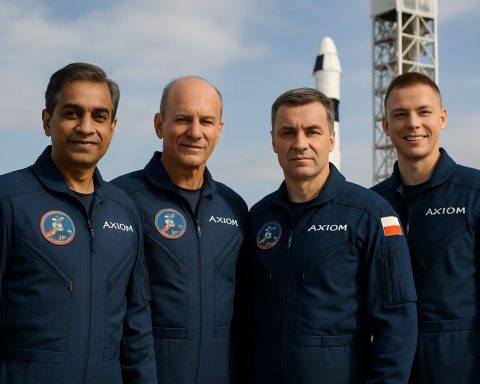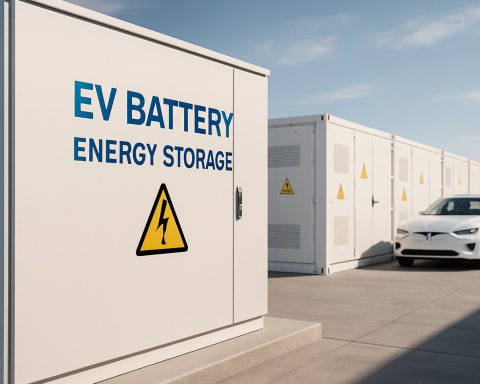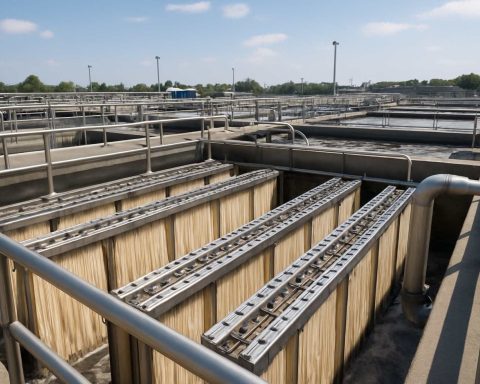- A drone strike hit the Chornobyl nuclear power plant in Ukraine, raising global concerns about nuclear safety and security.
- Ukrainian President Volodymyr Zelenskyy emphasizes the fragility of safety at nuclear sites amidst geopolitical tensions.
- Radiation levels at the site remain stable post-attack, providing limited reassurance.
- The attack coincided with the Munich Security Conference, highlighting the urgency of the Russian-Ukrainian conflict in international discussions.
- International Atomic Energy Agency pleads for heightened vigilance regarding nuclear safety concerns.
- Amid ongoing U.S.-Russia diplomatic talks, there are concerns about global security, fueled by Trump’s perceived trust in Putin.
- The incident underscores the need for global accountability in preventing nuclear threats and ensuring safety.
As a ghostly drone sliced through the Ukrainian night, its ominous shadow loomed over the Chornobyl nuclear power plant, carrying with it nothing short of a catastrophe-in-waiting. Inside, the chilling silence of the exclusion zone shattered when the high-explosive warhead collided with the containment shell, igniting a blaze that mirrored the growing geopolitical inferno across Europe.
Ukrainian President Volodymyr Zelenskyy, his words echoing the gravity of the moment, underscored this alarming truth: safety is a fragile illusion in a world where nuclear sites can become the chessboard for war games. Despite the subsequent outcry, one chilling comfort remained—radiation levels, for now, held steady.
The timing of this strike is unsettling. It collided with the gathering of international leaders at the Munich Security Conference. While discussions were poised to navigate the turbulent waters of Russian-Ukrainian relations, the fresh attack threw them back into the storm.
With diplomatic talks teetering like a candle in the wind, the world watches. Zelenskyy, from afar, raised an alert about a global specter of threat looming from one state that disregards consequence—today’s Russia. Meanwhile, the International Atomic Energy Agency signals an urgent plea, its vigilance a beacon as nuclear safety quivers once more.
As the political stage sets for dialogue between the U.S. and Russia, Trump’s trust in Putin ochers the color of concern, adding yet another layer to the tapestry of this age-old conflict. But, it is Ukraine’s burnt rooftops under the pallor of a drone strike that stand as a chilling reminder: The world must awaken to hold accountable those weaving this web of nuclear nightmare.
Drone Warfare Escalates: What You Need to Know About Security and Global Implications
How-To Steps & Life Hacks for Nuclear Plant Safety
1. Enhance Drone Detection Systems: Deploy advanced radar systems and AI-driven tracking technologies to identify drones early. The use of geofencing technology can prevent drones from entering restricted areas.
2. Implement Strict Access Controls: Increase physical security around key checkpoints and establish multi-layered security protocols, including biometric authentication for personnel.
3. Conduct Regular Security Audits: Frequent evaluations of security measures can help identify vulnerabilities and weaknesses, thereby enabling timely upgrades.
4. Public Awareness and Education: Conducting drills and distributing informational materials about safety and emergency protocols can prepare surrounding communities for potential threats.
Real-World Use Cases of Drones in Conflicts
Drones are increasingly used in warfare due to their cost-effectiveness and ability to operate without putting humans at risk. Countries like the U.S., Turkey, and China have reported using drones for surveillance and strike purposes in various conflict zones.
Market Forecasts & Industry Trends
The global drone market is expected to grow from $22.5 billion in 2020 to $42.8 billion by 2025, with military applications being a significant segment of this growth. This surge is driven partly by geopolitical tensions and technological advancements.
Reviews & Comparisons
Drones like the Bayraktar TB2 and the MQ-9 Reaper are compared for their operational capabilities. The Bayraktar TB2 is praised for its affordability and efficiency, while the MQ-9 Reaper is noted for its advanced payload and endurance.
Controversies & Limitations
Drone strikes often raise ethical concerns due to civilian casualties and the sovereign rights of nations. There’s an ongoing debate about the legality and morality of drone warfare, with international laws struggling to keep pace with technological advancements.
Security & Sustainability
Securing nuclear sites against drone strikes requires international cooperation and regulation. Sustainability in this context involves developing non-lethal deterrent technologies and minimizing environmental impacts.
Insights & Predictions
With rising geopolitical tensions, we can expect increased drone use in military strategies. However, as international laws evolve, there might be stricter regulations on drone warfare, potentially influencing the development of counter-drone systems.
Actionable Recommendations
– Invest in Counter-Drone Technologies: Organizations and governments should prioritize technologies capable of disabling or neutralizing unauthorized drones.
– International Collaboration: Diplomatic efforts should focus on creating international treaties that address drone warfare and protect sensitive sites globally.
For more on the global drone market and strategic insights, visit Statista.
Conclusion
As the recent events around the Chornobyl nuclear power plant demonstrate, the implications of drone warfare are far-reaching. By understanding the current landscape and adopting proactive measures, nations can safeguard against potential threats while fostering international dialogue to address the ethical and legal challenges of drone technology.











